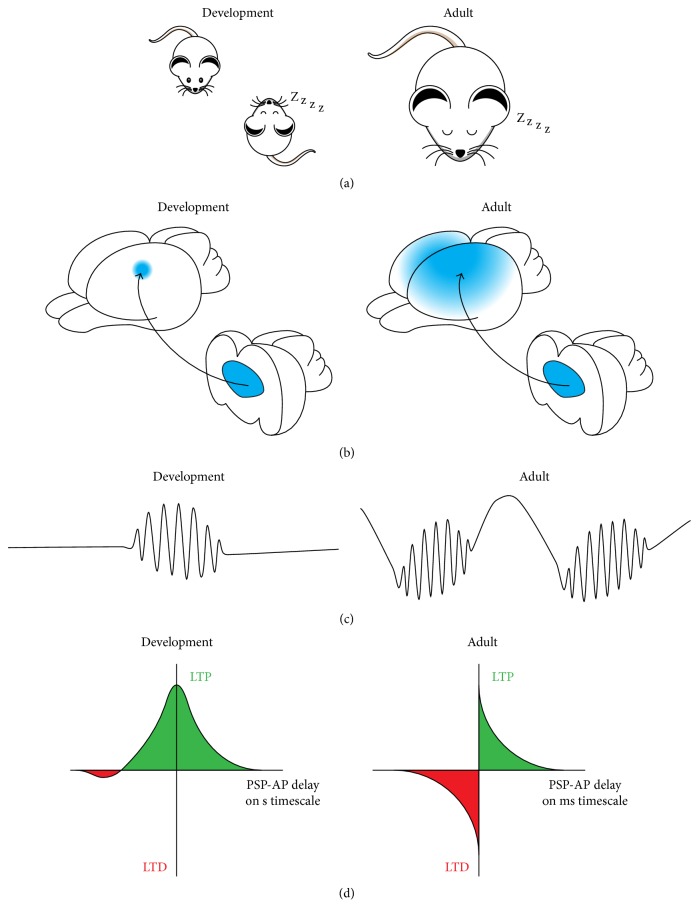Figure 1.
Spindle activity in development and adult sleep. (a) NSBs occur independent of the behavioral state (left), whereas ASSs are confined to SWS (right). (b) Thalamocortical activity locally synchronizes the developing networks (left), whereas ASSs entrain large cortical areas (right). (c) NSBs represent discontinuous patterns of oscillatory activity during early development (left). ASSs are embedded in slow oscillations (right). (d) Synchronized activity during development leads to synaptic potentiation (left). Precise timing of synaptic inputs and action potentials controls synaptic potentiation and depression in mature brains (right).

